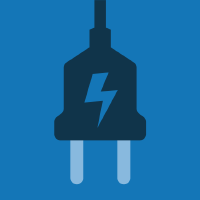Topic Menu
► Topic MenuTopic Editors



Integration of Renewable Energy
Topic Information
Dear Colleagues,
The energy supply chain is changing rapidly, driven by a societal and environmental push towards clean and renewable resources. However, renewable resources such as solar, wind, tide, and wave energy are inherently uncontrollable as their availability is governed by the often challenging-to-predict natural cycles. This in turn poses a great challenge for the grid system to match the supply to the constantly changing demand and maintain network stability. Without a viable solution to the plethora of underlying technical issues, we will not be able to integrate and utilize renewable energy resources and systems in an economic and environmentally affordable way.
The aim of this Topic is to collect the latest developments and applications in these interdisciplinary fields related to "Integration of Renewable Energy". Topics of interest include but are not limited to:
- Wind energy;
- Solar power;
- Tidal and wave energy;
- Hybrid renewable energy systems;
- Microgrids;
- Modelling, simulation, optimization, and control;
- Condition monitoring and control, including advanced control for optimized exploitation;
- Energy management and demand-side management;
- Power electronic converters and systems;
- Storage technologies and systems;
- Vehicle to grid and grid to vehicle;
- Inertia and frequency control strategies;
- HVAC and HVDC interconnection systems;
- Smart metering and data management solution;
- Energy security;
- Artificial-intelligence-enabled techniques and applications.
Dr. Xiandong Ma
Prof. Dr. Mohamed Benbouzid
Dr. Sinisa Durovic
Prof. Dr. Hao Chen
Topic Editors
Keywords
- renewable energy systems
- smart grids
- microgrids
- energy storage
- electric vehicle
- power conversion
- energy management
- monitoring and control
Participating Journals
| Journal Name | Impact Factor | CiteScore | Launched Year | First Decision (median) | APC | |
|---|---|---|---|---|---|---|

Electricity
|
- | 4.8 | 2020 | 27.2 Days | CHF 1000 | Submit |

Electronics
|
2.6 | 5.3 | 2012 | 16.8 Days | CHF 2400 | Submit |

Energies
|
3.0 | 6.2 | 2008 | 17.5 Days | CHF 2600 | Submit |

Processes
|
2.8 | 5.1 | 2013 | 14.4 Days | CHF 2400 | Submit |

Sustainability
|
3.3 | 6.8 | 2009 | 20 Days | CHF 2400 | Submit |

MDPI Topics is cooperating with Preprints.org and has built a direct connection between MDPI journals and Preprints.org. Authors are encouraged to enjoy the benefits by posting a preprint at Preprints.org prior to publication:
- Immediately share your ideas ahead of publication and establish your research priority;
- Protect your idea from being stolen with this time-stamped preprint article;
- Enhance the exposure and impact of your research;
- Receive feedback from your peers in advance;
- Have it indexed in Web of Science (Preprint Citation Index), Google Scholar, Crossref, SHARE, PrePubMed, Scilit and Europe PMC.


